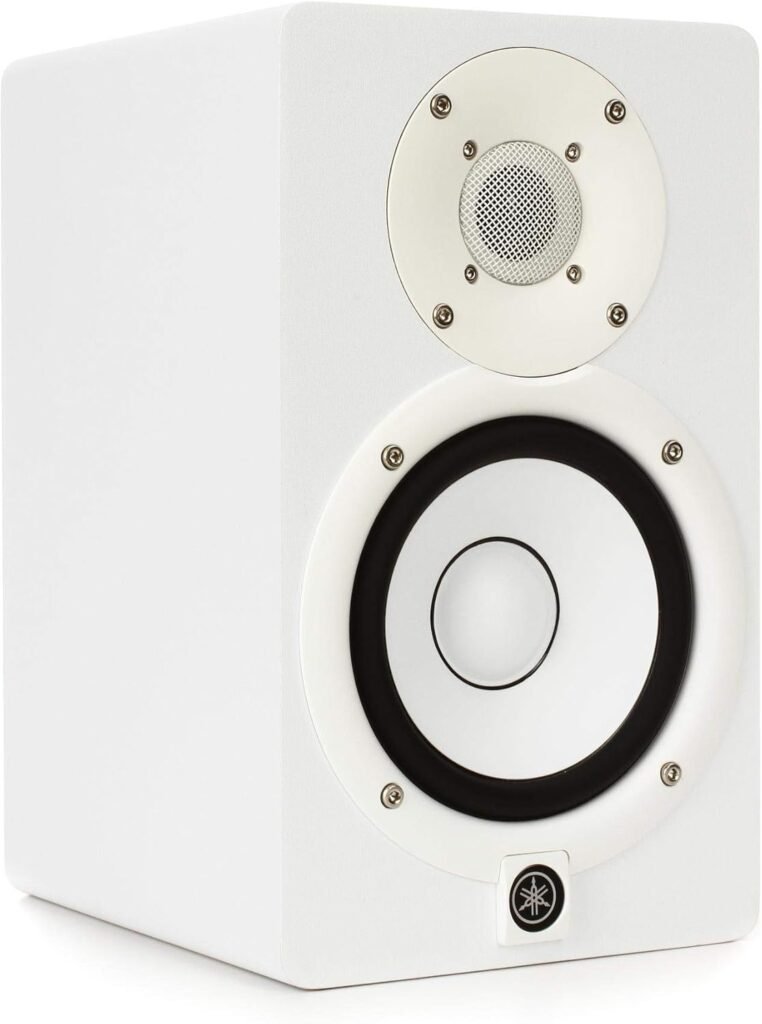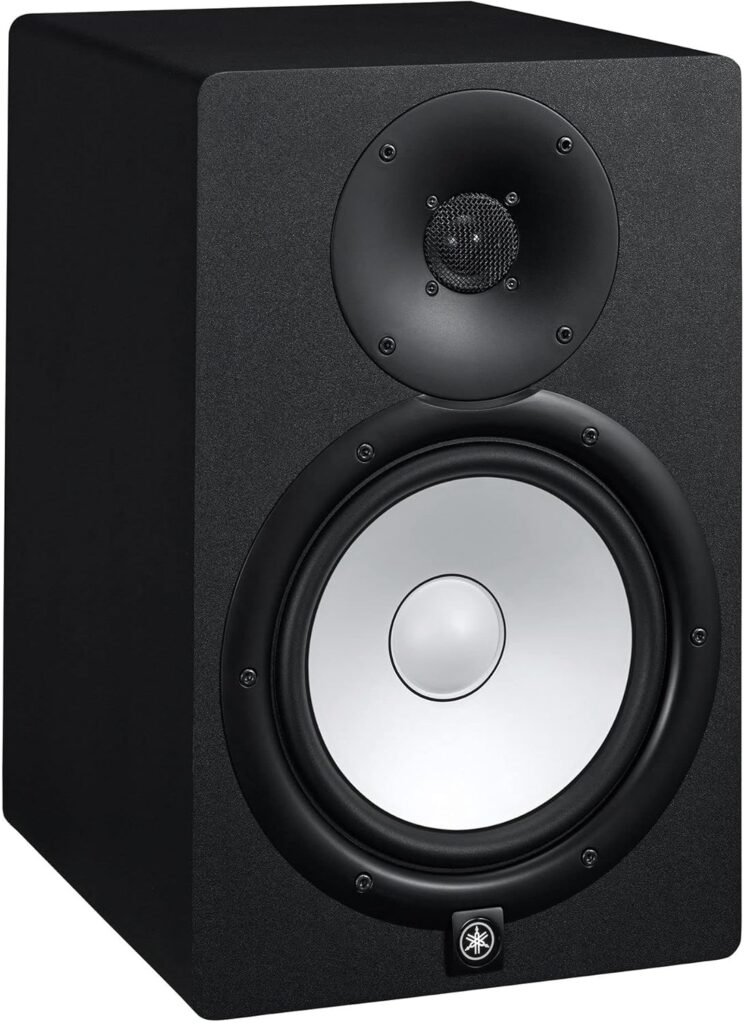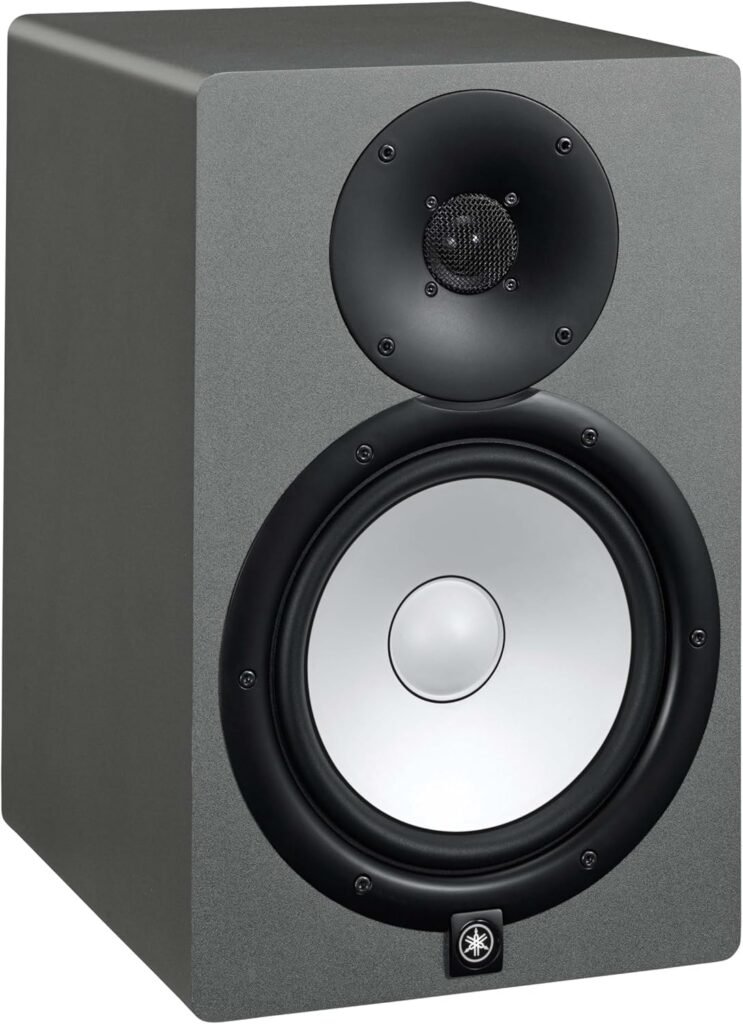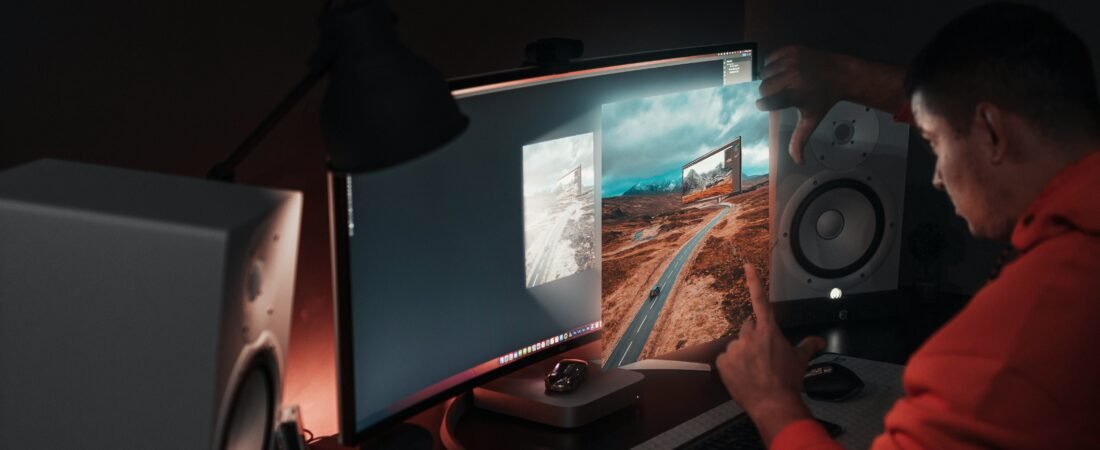If you’ve ever sat in front of your speakers thinking, “Why doesn’t my mix sound as clear as it does in the studio?” – you’re not alone. Choosing the best studio monitors isn’t just about price or brand hype; it’s about getting honest, uncoloured sound that reveals every detail in your music. Some people say Yamaha Studio Monitors are too flat for casual listening, but what if that’s exactly what makes them the ultimate choice for both music production and pure listening pleasure? Let’s explore why Yamaha Studio Monitors reign supreme.
1. Why Choosing the Best Studio Monitors Matters
Have you ever spent hours mixing a track, only to play it back on your car speakers and wonder, “Why does this sound completely different?” That frustration often comes down to your studio monitors.
Unlike regular consumer speakers, the best studio monitors are designed to deliver a flat, honest frequency response. This means what you hear is what you actually recorded, without any artificial bass boost or sweetening of the highs. Studio monitors help you identify subtle mistakes, tonal imbalances, and clashing frequencies before you send your mix to the world.
This is where Yamaha Studio Monitors shine. They are famous for revealing flaws in your mix that other speakers hide. While this may sound intimidating at first, it’s a blessing for producers, singers, songwriters, and even casual listeners who want to experience their favourite tracks exactly as they were recorded.
2. What Makes Yamaha Studio Monitors Stand Out?



A Brief History: Yamaha’s Legacy in the Studio World
When you think of Yamaha Studio Monitors, chances are the iconic white-coned NS10s come to mind. Introduced in the late 1970s, the Yamaha NS10 became an industry standard almost overnight. Engineers loved them not because they sounded “beautiful,” but because they revealed every flaw mercilessly. If your mix sounded good on NS10s, it would translate well everywhere.
Fast forward to today, Yamaha has carried forward that legacy with their HS series. The black enclosures and signature white woofers are a nod to their legendary predecessors, but with improved accuracy and modern engineering. In studios worldwide, you’ll see HS5s, HS7s, and HS8s sitting proudly on mixing desks, trusted by top producers for their honest playback.
Their Design Philosophy: Flat Frequency Response for True Playback
What sets Yamaha apart from other brands is their commitment to honest sound. While some monitors hype up certain frequencies to sound more “impressive,” Yamaha’s HS series delivers a flat, neutral response. This ensures that your decisions while mixing are based on reality, not illusions.
For instance, if your track sounds muddy on Yamaha Studio Monitors, it’s actually muddy. If the vocals are getting lost in the midrange, that’s exactly what’s happening. There’s no sugarcoating – and that’s a good thing.
One of the most popular models for this purpose is the Yamaha HS8. This powerful PA, powered studio monitor speaker is loved by producers, DJs, and performers for its exceptional accuracy and deep low-end response. Available in sleek black, slate grey, and clean white, it fits any studio aesthetic effortlessly. [Insert Product Image Here]
Reliability and Durability for Long-Term Use
Another reason why Yamaha Studio Monitors, particularly the Yamaha HS8, are considered among the best studio monitors is their build quality. Producers report using their HS series monitors daily for years without any issues. The robust cabinet design reduces unwanted resonance, and their bi-amplified system ensures clarity across all frequencies. In other words, Yamaha Studio Monitors are an investment that will serve you reliably for a long time.
3. Yamaha Studio Monitors for Music Production
Helping Producers Mix and Master with Confidence
Ask any experienced mixing engineer or producer, and they’ll tell you that mixing on speakers with a flat frequency response is non-negotiable. Yamaha Studio Monitors, particularly the HS series, are known for their exceptional clarity in the mids and highs, which is crucial for balancing vocals, guitars, and synths.
Popular Yamaha Models for Producers
- Yamaha HS5: Great for small studios or untreated rooms. Clear mids, slightly limited low-end due to the 5-inch woofer, but perfect for vocals and acoustic instruments.
- Yamaha HS7: The balanced middle ground. Offers extended low-end response without overpowering smaller rooms.
- Yamaha HS8: The flagship model. Powerful bass response and a wider frequency range, ideal for EDM, hip-hop, and full-band production. Producers and DJs love the Yamaha HS8 for its clarity and depth, making it a staple in professional setups.
Each model carries Yamaha’s flat response signature, allowing you to choose based on room size and genre focus.
Producer Testimonials and Industry Trust
From bedroom producers to Grammy-winning engineers, Yamaha Studio Monitors continue to earn praise. Many producers note that their mixes translate better to car speakers, phone headphones, and club systems when mixed on Yamaha monitors like the Yamaha HS8. That’s because these monitors don’t flatter your mix – they expose the truth so you can fix it before release.
4. Yamaha Studio Monitors for Music Listening
Are Yamaha Studio Monitors Good for Casual Listening?
Here’s the honest answer: it depends on what you want from your listening experience. If you’re used to consumer speakers with heavy bass and bright highs, Yamaha Studio Monitors might sound “flat” at first. But once your ears adjust, you’ll start hearing details in your favourite songs you never noticed before – the faint reverb tail on a vocal, the subtle stereo panning of hi-hats, the breathiness of an acoustic guitar.
For example, listening to your favourite playlists through the Yamaha HS8 brings out those intricate layers that regular speakers gloss over. Whether you’re analysing a mix or just enjoying music, the HS8 delivers a professional, immersive experience.
The Benefit of Accurate Sound for Music Enthusiasts and Audiophiles
For music enthusiasts and audiophiles who want to hear music as it was actually recorded, Yamaha Studio Monitors are a revelation. You’re getting playback that’s as close as possible to what the mixing engineer heard in the studio. This means no frequency is boosted to impress you artificially; you hear the truth.
5. Comparing Yamaha Studio Monitors to Other Best Studio Monitors
Of course, Yamaha isn’t the only brand in the game. Here’s a quick comparison with some popular alternatives:
| Brand | Strengths | Why Yamaha Still Stands Out |
|---|---|---|
| KRK Rokit Series | Warm, bass-heavy sound, good for hip-hop and EDM | Yamaha offers a flatter, more neutral response for accurate mixing |
| Adam Audio T Series | Crisp highs with ribbon tweeters, great stereo imaging | Yamaha HS series is often more affordable while still delivering pro-level accuracy |
| JBL 3 Series | Wide sweet spot, deep bass | Yamaha provides a tighter, more controlled low end with better midrange clarity |
Situations Where Yamaha May Not Be the Best Choice
If you produce bass-heavy genres and prefer feeling sub-bass vibrations without a subwoofer, KRK or JBL might appeal to you more. However, many producers still choose Yamaha Studio Monitors, especially the Yamaha HS8, for their accurate midrange, then pair them with a subwoofer when necessary.
6. Choosing the Right Yamaha Studio Monitor for Your Setup
Room Size Considerations
- Small rooms (<10sqm): HS5
- Medium rooms (10-20sqm): HS7
- Large rooms (>20sqm) or treated studios: HS8
Choosing the right size ensures you’re not overwhelming your room acoustics with excessive low-end buildup.
Budget Tips Without Compromising Quality
If you’re on a tight budget, starting with HS5s is a solid choice. You can always add a subwoofer later if you need extended low-end. Yamaha’s build quality remains consistent across the HS range, so you’re not sacrificing accuracy by choosing a smaller model.
Do You Need a Subwoofer with Yamaha Studio Monitors?
It depends on your production style. For genres like EDM, trap, or cinematic scoring, adding the Yamaha HS8 subwoofer gives you a full-range listening experience. For singer-songwriters or pop producers, the Yamaha HS8 alone often provides sufficient bass detail and clarity for a complete mix.
7. Final Thoughts: Are Yamaha Studio Monitors Worth It?
If you’re serious about music production or you’re a music enthusiast wanting to hear tracks in their true form, Yamaha Studio Monitors are among the best studio monitors you can buy. They’ve earned their reputation through decades of reliability, honest playback, and consistent build quality.
Here are the key takeaways:
- Yamaha Studio Monitors offer a flat, true sound that helps you mix confidently.
- They’re built to last, making them a smart investment.
- While they may sound flat compared to bass-heavy consumer speakers, they reveal details that most other monitors miss.
- The Yamaha HS8 in particular stands out for producers, DJs, and performers who need accurate bass and powerful sound reproduction for larger setups.
- They remain competitively priced against brands offering similar performance.
8. Call To Action
Ready to upgrade your studio or listening setup with Yamaha Studio Monitors? Check out the Yamaha HS8 today to experience your music with unparalleled clarity. Whether you choose the HS5, HS7, or HS8, you’ll be investing in the same honesty and quality trusted by top producers worldwide.
👉 Which Yamaha Studio Monitor are you considering? Drop your thoughts and questions in the comments below – I’d love to help you make the best choice for your studio or listening space.
If you want to share your own experiences or have questions about using the Yamaha HS8, drop a comment below. Let’s keep the conversation going and help every music enthusiast, music producer, DJ, singer songwriter, mixing and mastering engineer find the right tools to shine.

Leave a Reply